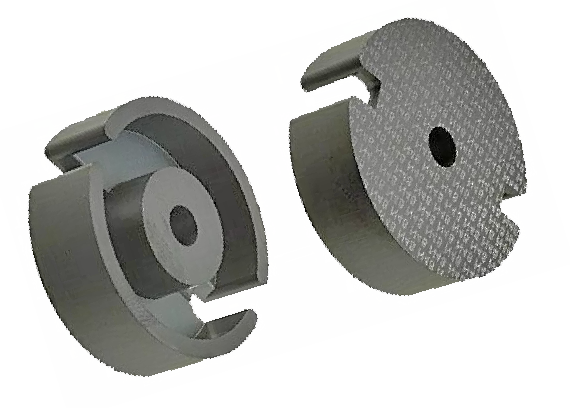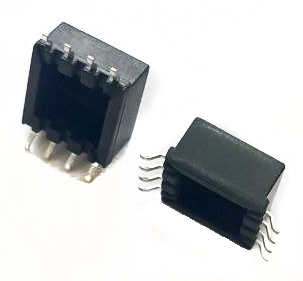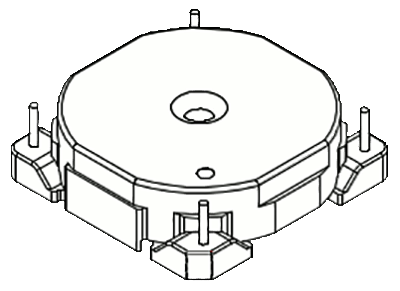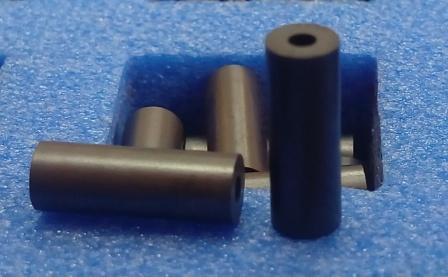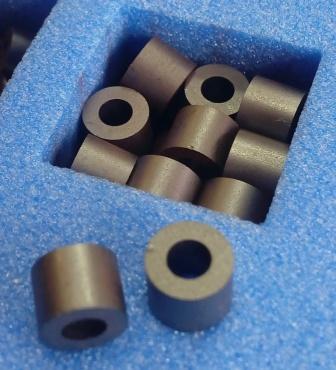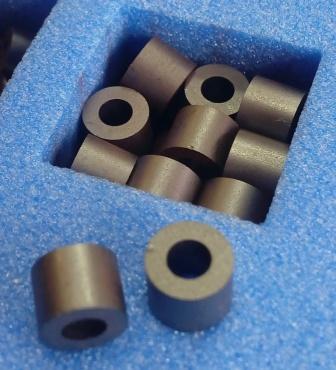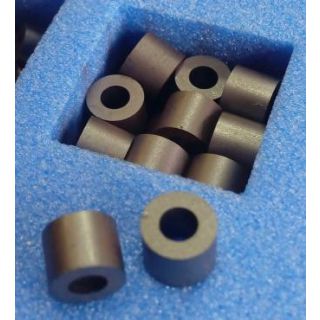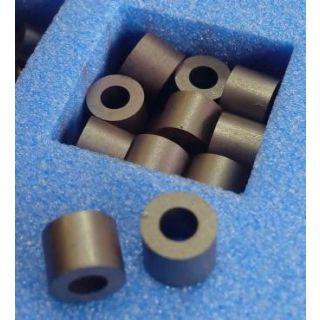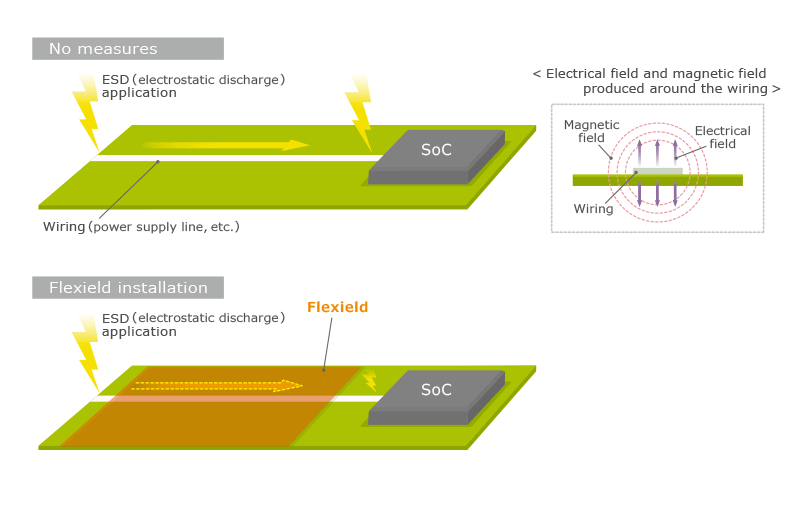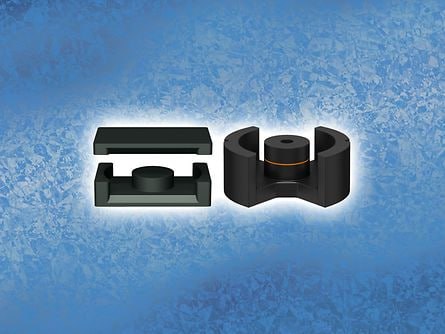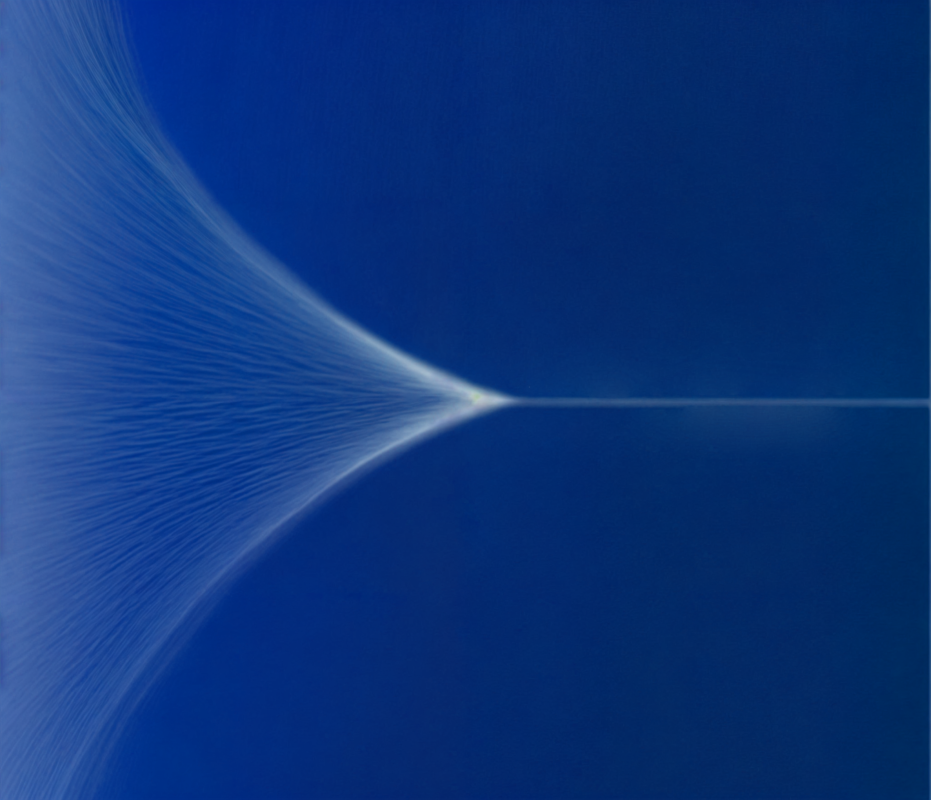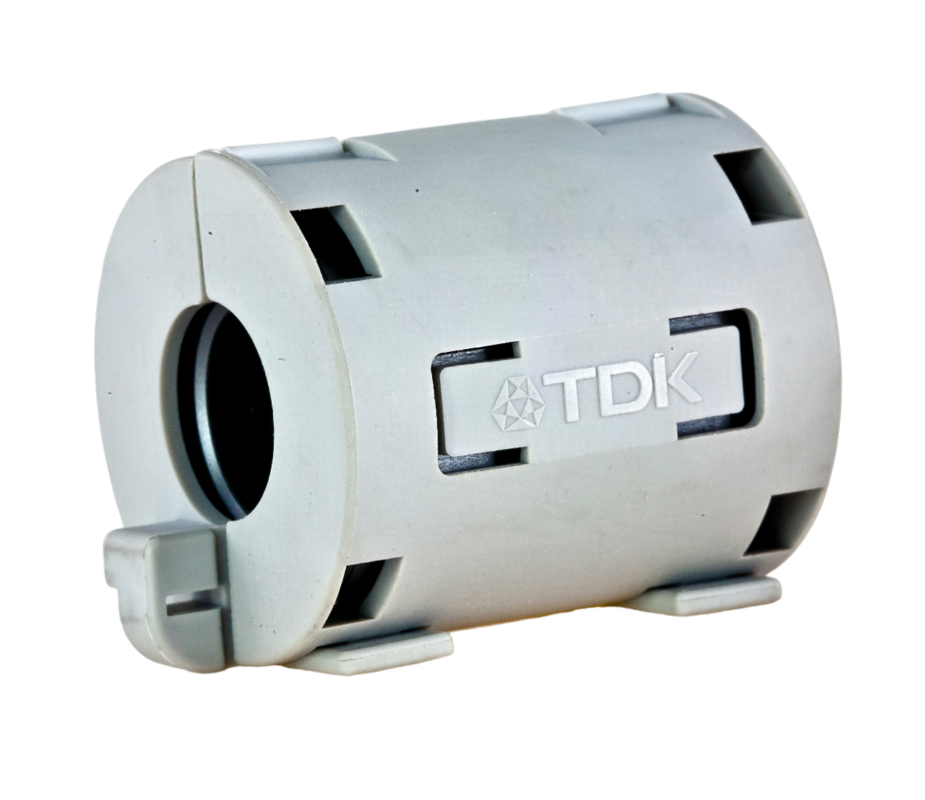
In mobile devices like smartphones, components such as chip varistors are commonly used to prevent malfunctions or damage to circuits caused by electrostatic discharge (ESD). However, TDK's noise suppression sheet from the "Flexield" IFL series (referred to as "Flexield" below) is another effective solution for suppressing ESD. The use case and its effectiveness are outlined below.
Figure 1 illustrates a test setup where ESD is applied to the wiring of a printed circuit board with an SoC. The strong electric and magnetic fields generated around the wiring are primary sources of noise.
Flexield is designed to absorb magnetic noise and convert it into heat. Thanks to this property, Flexield acts as a noise absorber, effectively mitigating surge noise like electrostatic discharge.
Use Case for Suppression of Electrostatic Discharge and Its Effectiveness
Electrostatic discharge contains noise components over a wide frequency band
We evaluated the effectiveness of Flexield in suppressing electrostatic discharge by conducting the IEC61000-4-2 ESD test. The discharge waveform used in this test involves various models that combine different energy storage capacities and discharge resistances. The model used to simulate ESD damage to devices like ICs from the human body is called the Human Body Model (HBM), with typical values of 150pF for electrostatic capacity and 330Ω for resistance.
Figure 2 shows a comparison of the measured waveforms without any protection and with Flexield (ESD voltage = 2000V). Without protection, the peak voltage reaches 1630V, while with Flexield, the peak voltage drops to 1410V, a reduction of approximately 15%.
The electrostatic discharge waveform, which rises sharply, contains noise over an extremely wide frequency range. TDK’s IFL series "Flexield" sheet is highly effective at suppressing noise across a broad frequency spectrum, from low to high frequencies. This makes Flexield particularly effective at reducing the peak voltage of electrostatic discharges.

